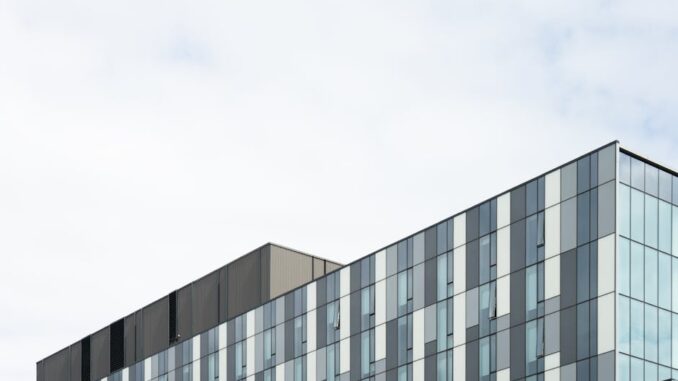
Summary
This article provides a comprehensive guide to designing and constructing energy-efficient buildings. It covers key areas such as insulation, window selection, HVAC systems, and renewable energy integration. By following these tips, builders can create sustainable structures that minimize energy consumption and reduce environmental impact. It emphasizes a whole-house systems approach, highlighting the importance of considering all elements for optimal performance.
Successful low-energy building design hinges on careful planning. Focus360 Energy can help.
Main Story
Okay, so let’s talk about building smarter, not just bigger. It’s not just some trendy thing; energy-efficient buildings are pretty much a necessity now, right? It’s kinda like, we have to do this if we want a planet left for our kids. And, let’s be honest, who doesn’t like lower bills? You’d be surprised how much it also improves comfort and boosts property value. Seriously, whether you’re starting from scratch or giving an old building a facelift, making energy efficiency a priority is just plain smart. Let’s dive into some actionable steps you can take.
First up, planning, planning, planning. Before you even think about laying a foundation, you’ve got to really think it through. It’s like that old saying “measure twice, cut once.” Consider the location, the climate, how the building sits in relation to the sun. That’s important! For example, south-facing windows? They’re like little solar heaters in the winter. Also think about passive design strategies, like cross-ventilation. Did you know that you can, often, reduce your reliance on AC, just with a good breeze, it’s true. Do an energy model analysis early on, its like a blueprint for savings. Trust me, you’ll be amazed at how much energy you can save just by getting this part right.
Secondly, think of insulation, like a cozy blanket for your building, a really thick one. You want it to wrap your entire building, to prevent all that heat from escaping in winter, or all that cool air leaking out in summer. Materials like polystyrene or cellulose are great, but it’s crucial to make sure you’re insulating EVERYTHING – walls, roofs, even the floors. That means your HVAC system isn’t working overtime, which, you know, saves you a lot. I once visited a place, they hadn’t insulated the attic, oh it was a cold place I can tell you.
Next, those windows and doors? More than just holes in the wall, aren’t they. They are actually crucial for energy efficiency. You’ll want energy-efficient windows—double or even triple glazed, with low-e coatings. These are not just fancy names. They actually help with heat transfer. Don’t forget proper sealing, you don’t want any drafts, right? It’s crucial for comfort. Also, think about the placement. Natural light can really reduce how much artificial lighting you need during the day. It’s cheaper and prettier to be fair.
Now, HVAC systems are big energy users, like the heart of the building. So, what do you do? Choose high-efficiency units that have multi-speed settings. Regular maintenance is crucial, think like servicing your car you wouldn’t ignore your car so don’t ignore your HVAC system. A simple filter change can do wonders. And, programmable thermostats? They are your secret weapon! Set it to adjust automatically when no-one is in the building, and save that energy. You should be considering that seriously.
Next, let’s talk about lighting. Switching to LEDs? It’s a no-brainer. These consume less energy and last way longer than traditional bulbs. And you can get really good light from them now. It’s a big improvement. Also, install lighting controls, like occupancy sensors, to dim the lights or shut them off entirely when no one is around. Natural light is the best, however, and daylight harvesting systems to get the most from that are worth looking into.
Then, airtightness. Sounds simple enough, but any small air leaks or drafts can really throw a wrench in your efficiency plans. Seal everything up properly. I’m talking weather stripping around all doors, all windows and every opening. It’s like having a bubble around your building; it’ll really help.
Furthermore, lets not forget those renewable energy sources. Integrating solar panels, or wind turbines, can drastically reduce your dependence on fossil fuels. Solar panels are a great choice, especially when you can convert all that sunlight into clean energy. It’s not just good for the environment, it can also save you money, so don’t overlook this. Depending on your location, geothermal systems can be a great option as well!
Finally, water heating is another big consumer of energy. Install energy-efficient water heaters, like tankless or heat pump models. They do make a difference! Also, install low-flow fixtures and insulate hot water pipes. I’ve noticed the difference in my own home. It really is an easy thing to do.
So, by following these tips, you know, taking a wholistic approach, you can build structures that are not only kinder to the planet, but are also cost-effective and a comfortable place to be. It’s an investment in the future, that’ll benefit both the environment and your pocket. What’s not to like?


Be the first to comment